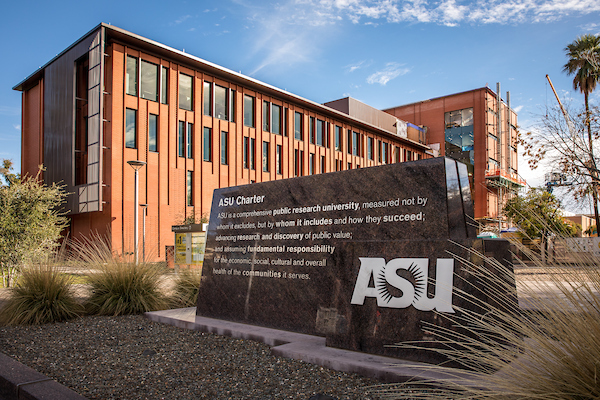
News
SURA Welcomes New Member Arizona State University

“We are very excited to welcome ASU to the SURA consortium,” said Dr. Sean J. Hearne, President and CEO of SURA. “ASU’s numerous strengths in the Earth and space sciences are well-matched with SURA’s key directions and we look forward to many years of partnership.”
Multiple academic and research programs at Arizona State University support SURA’s focal areas. Examples include the School of Earth and Space Exploration, the School of Ocean Futures in the College of Global Futures, and the Biodesign Institute’s CXFEL Labs.
“Arizona State University is designed to advance research and discovery of public value, and to do so through innovative partnerships such as those facilitated by SURA,” said Sally C. Morton, Executive Vice President of ASU’s Knowledge Enterprise. “Advancing science for impact, at scale and at speed is crucial to addressing the world’s grand challenges. We look forward to creating new collaborations that promote our nation’s scientific capabilities.”
ASU will help strengthen SURA’s space science community and advance NASA’s strategic science goals. ASU ranks in the top two percentile for higher education R&D expenditures financed by NASA. With more than 120 space industry partners, more than 300 space investigators university-wide, and more than 40 instrument facilities and laboratories, ASU is making an important contribution in the space field.
Researchers from ASU lead NASA space missions Psyche and LunaH-Map. They also develop and run instruments for scientific missions to the Moon, asteroids, and planets including the Lunar Reconnaissance Orbiter Camera (LROC), OSIRIS-REx, Lucy, and the Mars 2020 Perseverance Rover. Faculty and students are participating in more than 25 active space missions or instruments in development.
The ASU College of Global Futures, a unit of the Julie Ann Wrigley Global Futures Laboratory, comprises four first-ever schools in the United States: the School of Sustainability, the School for the Future of Innovation in Society, and the School for Complex Adaptive Systems. Additionally, the School of Ocean Futures will open in the fall of 2024.
SURA’s Coastal program aims to advance collaborative research opportunities in the coastal sciences. In this realm, ASU’s School of Ocean Futures will combine research and teaching facilities in the Pacific and Atlantic oceans, with cutting-edge research facilities within the Rob and Melani Walton Center for Planetary Health on ASU’s Tempe campus.
Additionally, ASU’s Biodesign Institute received a $90.8 million grant that will allow the university to build the world’s first Compact X-ray Free Electron Laser (CXFEL) that could advance numerous scientific fields and industries including medicine, drug development, semiconductor design and microelectronics, as well as clean energy and quantum materials. ASU students will receive hands-on training to become the next generation of X-ray research scientists. The CXFEL Labs will be available to national and international investigators from a wide range of scientific disciplines.
Arizona State University has more than 142,000 students across five campus locations, plus an online learning program where students can complete a degree online, from anywhere in the world. The university offers more than 400 undergraduate programs and majors, and 550 graduate degree programs and certificates.
SURA is a consortium of fifty-six member universities that fosters collaborations which enhance members’ capabilities of undertaking significant, transformative scientific research projects that no single institution can handle independently. The Thomas Jefferson National Accelerator Facility is managed by Jefferson Science Associates, LLC, a wholly owned subsidiary of SURA, for the U.S. Department of Energy’s Office of Science.
Contact: Kerri Norris, Director of Communications at SURA: knorris@sura.org